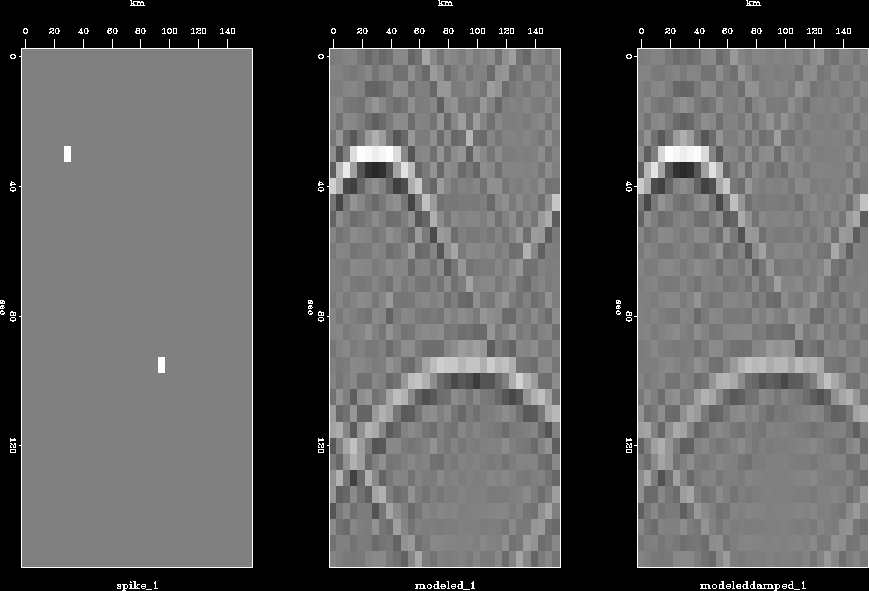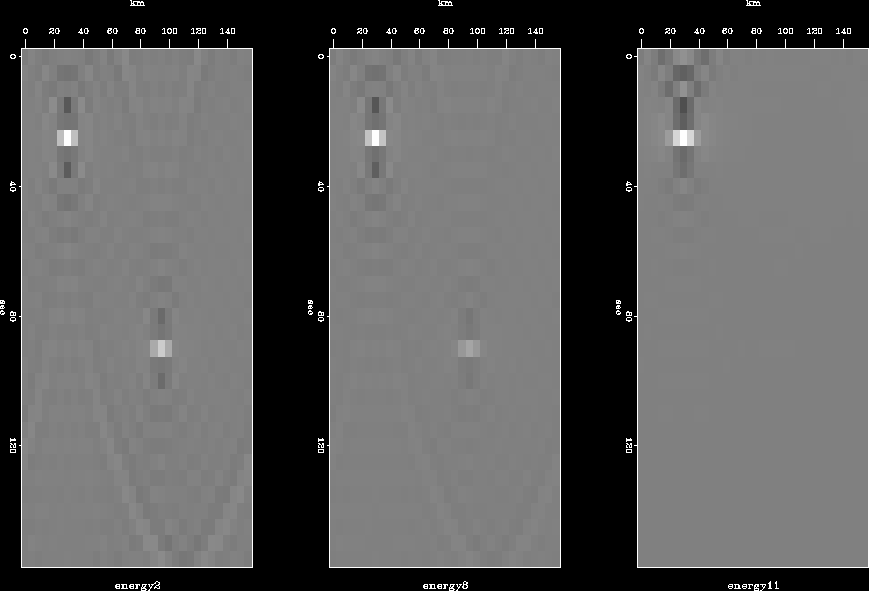Figure 2 shows from left to right: a two-spike synthetic model,
modeling with equations (1) and (2). It is possible to
observe the decay of amplitude (energy) with respect to time when we include
the damping factor (![]() ) in our modeling equation. The same effect is
observable in Figure 3, which shows the migration
results using the results of Figure 2.
) in our modeling equation. The same effect is
observable in Figure 3, which shows the migration
results using the results of Figure 2.
 |
 |
The energy decay is a function of the damping factor (![]() ). Figure 4
presents experimental results of the energy variability with respect to
). Figure 4
presents experimental results of the energy variability with respect to ![]() .The experiment consists of modeling and migration of the two-spike model with
equation (2) for different values of
.The experiment consists of modeling and migration of the two-spike model with
equation (2) for different values of ![]() .Each sample in the plot (Figure 4) represents the energy of
each modeling-migration result for
.Each sample in the plot (Figure 4) represents the energy of
each modeling-migration result for ![]() ranging between 0.002
and 0.04 every 0.002. It is possible to observe that
the energy decays exponentially with respect to the damping factor; this
decrease is due to the omission of causality in the
redefinition of ikz.
ranging between 0.002
and 0.04 every 0.002. It is possible to observe that
the energy decays exponentially with respect to the damping factor; this
decrease is due to the omission of causality in the
redefinition of ikz.
|
energy
Figure 4 Energy decay with respect to the damping factor |  |
For comparison, Figure 5 shows three results of the experimental procedure described before. It is possible to observe that the bigger the damping factor, the less energy is present in the final result.
 |